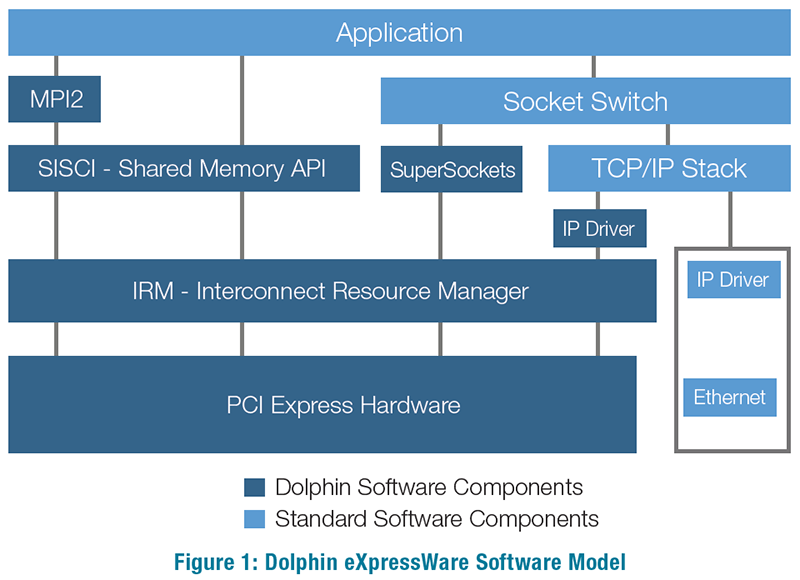
Today’s embedded systems are made up of powerful processing subsystems, each of which is uniquely designed to serve a particular function. In high-performance embedded systems, each of these subsystems is often fully functional processing nodes themselves, and the limiting factor when optimizing for the highest system performance often lies in the processor-to-processor data paths. Passing data from processing node to processing node in the most efficient way possible, with the lowest latency and highest throughput, can often have the greatest impact on system performance.
Curtiss-Wright has partnered with Dolphin Interconnect Solutions to bring their eXpressWare PCI Express (PCIe) fabric software to the embedded VPX world. Uniquely optimized to take advantage of hardware features such as DMA and multi-core processing, eXpressWare can be used to exploit the highest levels of data fabric performance for the rugged defense industry.
In our first part of this white paper series, we introduced the use of fabrics for high-performance embedded systems and focused on the hardware and architectural options available to the systems designer when using PCIe as a high-performance fabric - read the first white paper in this series here. In this second part, we present several flexible software interfaces provided for applications development, comparing their advantages and tradeoffs. Finally, we present performance benchmarks using a variety of Curtiss-Wright 3U VPX modules.

Download the white paper to learn more.
- Dolphin eXpressWare™
- SuperSockets
- SISCI
- Considerations for picking the right API
- PCIe fabric implementation on Dolphin eXpressWare and performance considerations